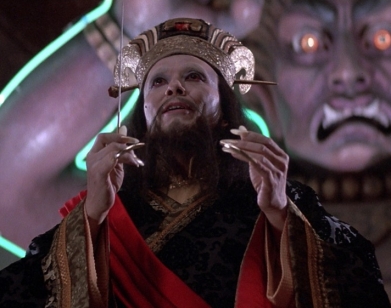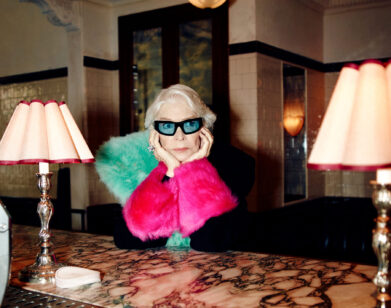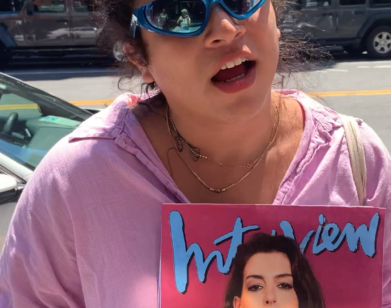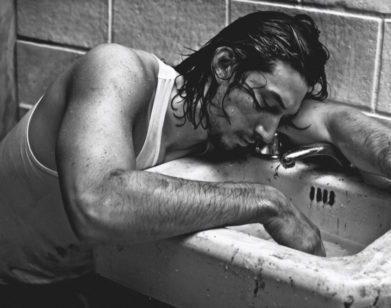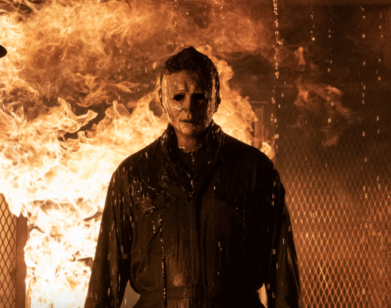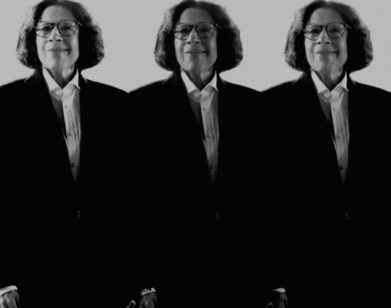Why does Hollywood always get Chinatown wrong?
Chinatown is more than a place to get sticky noodles. In the movies, at least, the area is portrayed as a booming business district full of stereotypical “ching chong” shopkeepers—the kind who overcharge for gremlins, magical potions and fortune cookie wisdom without the cookie. Elsewhere, the area is a crime-riddled no-go zone, crammed with brothels, opium dens and damning symbolism of what’s wrong with America. And if you’ve got a personal score to settle? Forget it, Jake, it’s Chinatown.
Starting on September 29, New York’s Metrograph is presenting “Imaginary Chinatown,” an enticing series of films which depict Chinatown in their own, mostly problematic way. That these movies are all directed by white men may not be a huge surprise, especially once you’ve watched them, but together they form an invaluable document and study of western xenophobia over the past century. Who knows, you might actually learn something, even if it’s just how much you love the sight of Jack Nicholson with a bloody nose.
For most of these films, Chinatown plays a major part in the plot. The directors involved, including geniuses like Martin Scorsese and Sergio Leone, take full advantage of the rich, visual textures and traditions of Chinese artistry. Less of a priority, evidently, is the integration of fully believable, fleshed-out Asian characters into the storyline. Even with the argument that Chinatown-related roles (the ones not taken by Mickey Rooney) created jobs for underworked Asian-American actors, it’s worth examining what these parts actually entailed.
One actor you’ve certainly seen, albeit through the gaps between your fingers, is Keye Luke, who plays Mr. Wing in Joe Dante’s Gremlins (1984) and Dr. Yang in Woody Allen’s Alice (1990). In both, he embodies a mystical Chinaman caricature with broken English who seemingly spends his days bamboozling white people who stumble into Chinatown.
In Gremlins, Mr. Wing, with his false eye and wig, not only has to ignore a racist remark about “bad dragon breath,” but ultimately his Chinese antique store is to blame for unleashing a mogwai upon the neighborhood. All those monsters wrecking your property and talking through movies? They came from Chinatown.
But Alice is even worse, if only because Dr. Yang’s ineloquence (“What is trouble?”) sticks out in a movie that’s mostly rapid one-liners. Some actors in Woody Allen movies get accused of doing an impersonation. Others don’t get that luxury. When Mia Farrow visits his office for a check-up, she becomes hypnotized and leaves with physics-altering herbs. It’s Alice in Wonderland—except Chinese culture is the quirky looking glass.
More extreme with the fantasy element is John Carpenter’s Big Trouble in Little China (1986), which also tosses in the damaging stereotype of Chinatown as a cartoonish corner of the city that operates within its own crooked laws. (While it’s cute the “it’s not racist” crowd points out it’s about a white sidekick who mistakenly believes he’s the hero, the script is heavily weighted towards Kurt Russell in terms of fun, empathetic moments.) That said, if a genre-hopper like Carpenter wants to be The Thing and evolve as a director, shouldn’t he be allowed to pay earnest tribute to Zu Warriors from the Magic Mountain?
In fact, Carpenter discovered Big Trouble‘s co-star Dennis Dun in Michael Cimino’s Year of the Dragon (1985), another movie that is, to some extent, about a white guy cleaning up the unlawful mess that is Chinatown. Cimino, like Carpenter, also had to defend his film from charges of racism, but he did so by insisting it’s a film about racism. The script may call for racial epithets like “chink”, but it’s the lingo these characters would use. So what was Cimino supposed to do? It isn’t cut and dry, but it’s telling that you can watch either film and deduce within 10 minutes the skin color of its producers, writers and director.
What’s more important is to examine the bigger picture and recognize how often Chinatown is deployed for these same aforementioned tropes. A genre film here, a gritty crime-drama there. Whatever it is, the pattern of clichés is overwhelmingly negative. For instance, Scorsese’s Gangs of New York (2002) and Leone’s Once Upon a Time in America (1984) are ultra-violent period pieces whereby, respectively, Daniel Day-Lewis and Robert De Niro visit Chinatown’s bars and opium dens but choose not to converse with anyone Asian who works there—it’s just a change of scenery for gangsters requiring a hideout.
Of course, these stereotypes weren’t invented in the ‘80s. If anything, they were worse in the black-and-white era. William Wellman’s Chinatown Nights (1929) depicts the horror of witnessing a white woman lured into Chinatown’s underworld, and Raoul Walsh’s The Bowery (1933) is a comedy in which Chinese residents are burned to a crisp while firefighters squabble outside. Humor is subjective … but really?
Not that these films should be sent to the recycle bin. Quite the opposite. There’s much to take in from pieces of art like Tod Browning’s Outside the Law (1930) and D.W. Griffith’s Broken Blossoms (1919), which put openly racist characters on parade and are completely of their time. Intriguingly, Broken Blossoms, made by Griffith a few years after The Birth of a Nation, actually depicts a loving interracial relationship that’s wrecked by a furious white father. But it also posits that Limehouse, where London had its first Chinatown, could only be rescued by a white woman: “The Yellow Man watched Lucy often. The beauty which all Limehouse missed smote him to the heart.” As a Chinese viewer, it’s like watching how western society perceives you, and it’s fascinating to scrutinize.
After all, without paying attention to race, you get a sanitized movie like the recently released Death Note, a Seattle-set adaptation of a Japanese manga that eliminates its Asian influences and doesn’t engage with the melting pot world we live in today. Quite likely, if Chinatown features in fewer movies nowadays, it’s out of fear of causing a media storm, and I’ll be shocked if The Rock’s proposed Big Trouble in Little China remake ever elbows off the ground. The last movie I can remember featuring Chinatown in a key scene is when Greta Gerwig runs through the streets in Frances Ha, but that barely counts.
Aside from the obvious solution of hiring more non-white directors, it’s actually not that hard to depict the vibrant, brightly lit pleasures of Chinatown without fuelling stereotypes. And I don’t just mean swapping boring coffee shop scenes for a chat over dim sum. For instance, look at William Friedkin’s Jade (1995), which brilliantly stages the slowest car chase in cinematic history in the traffic of a Chinatown parade, with dragon dancers, drummers and outraged onlookers adding to the tension.
There’s a reason why I’ve taken this long to mention Roman Polanski’s Chinatown (1974). When you think of Chinatown, the image that springs to mind is of Jack Nicholson’s face, and the iconic line is of a cop warning him to stay away from the titular area. Chinatown, itself, barely features in the film, and only makes a brief cameo towards the end. Yet it’s the defining movie about the district.
In Robert Towne and David Fincher’s DVD commentary for Chinatown, Towne admits he didn’t want Nicholson’s Jake Gittes to ever reach Chinatown, and for it to remain “a state of mind”. (Incidentally, Fincher’s assessment of the ending: “I’d have redone this last shot … I’d have done 35 takes of this.”) It’s telling, then, that a film—especially one so embedded in pop culture—would reduce Chinatown to a metaphor and otherworldly entity, but really most of the aforementioned offenders are visualizing the district with their own similar fears and confusion. It may be a shame that some of the finest films of the past century are lumbered with xenophobic attitudes, but that’s what art does: it holds a mirror up to society and throws in a few car chases—if you’re lucky. It’s naive to pretend these films aren’t problematic, but it’d be dangerous to erase them from history. It’s Chinatown—let’s not forget it.
“IMAGINARY CHINATOWN,” A SURVEY OF HOLLYWOOD’S DEPICTION OF AMERICAN CHINATOWNS ON SCREEN, OPENS WEDNESDAY, SEPTEMBER 29, 2017 AT METROGRAPH.

